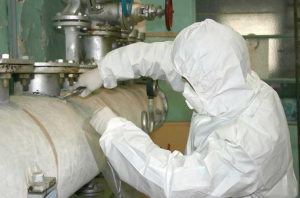Essential Steps For When Temperature Light On Dashboard Comes On

When the temperature light on your dashboard comes on, you must take immediate action. Ignoring this warning can lead to severe engine damage and leave you stranded. As soon as the light illuminates, pull over safely, turn off the engine, and allow it to cool down before checking the coolant level. Remember, addressing the issue promptly can prevent costly repairs and ensure your safety on the road.
What Must You Do When the Temperature Light on Your Dashboard Comes On?
Congratulations on taking the first step in being a responsible driver by noticing the temperature light on your dashboard! It’s important not to panic but to take immediate action to ensure your safety and the health of your vehicle. In this guide, we will walk you through what to do when the temperature light comes on so you can handle the situation like a pro.
Understanding the Importance of the Temperature Light
Before we delve into what actions to take when the temperature light on your dashboard comes on, let’s first understand why it is a critical indicator. The temperature light is designed to alert you when your engine is overheating. Engine overheating can lead to serious damage, so it’s crucial to address the issue promptly.
Immediate Steps to Take
When you see the temperature light illuminate on your dashboard, here’s what you should do:
1. Pull Over Safely
The first thing to do is to safely pull over to the side of the road or into a parking lot. It’s essential to stop driving immediately to prevent further damage to your engine.
2. Turn Off the Engine
Once you have safely stopped the car, turn off the engine. This will help cool down the engine and prevent any additional overheating.
3. Let the Engine Cool Down
It’s crucial to allow the engine to cool down before you open the hood. Be patient and give it some time to reach a safer temperature.
4. Check Coolant Level
While waiting for the engine to cool down, you can check the coolant level in the overflow tank. If the coolant level is low, you may need to add more coolant. However, never attempt to remove the radiator cap when the engine is hot as it can lead to severe burns.
Calling for Assistance
If you are unable to diagnose the issue or if you notice any leaks or other concerning signs, it’s best to call for roadside assistance or a mechanic. It’s important not to attempt to drive the vehicle if there is a serious issue with the cooling system.
Common Causes of Overheating
Several factors can contribute to your engine overheating. Some common reasons include:
1. Low Coolant Levels
If the coolant level is low, it can lead to insufficient cooling of the engine, resulting in overheating. Make sure to regularly check and top up your coolant levels.
2. Faulty Thermostat
A malfunctioning thermostat can cause the engine to overheat by not allowing the coolant to circulate properly. If you suspect an issue with the thermostat, it’s best to have it checked by a professional.
3. Cooling System Leaks
Leaks in the cooling system can lead to a loss of coolant, ultimately causing the engine to overheat. It’s important to address any leaks promptly to prevent further damage.
Preventive Maintenance
Regular maintenance is key to preventing overheating issues in your vehicle. Here are some tips to help keep your engine running cool:
1. Check Coolant Levels
Regularly check your coolant levels and top up as needed. Make sure the coolant is at the recommended level and is clean.
2. Monitor the Temperature Gauge
Keep an eye on your temperature gauge while driving. If you notice the gauge creeping into the red zone, pull over immediately to prevent overheating.
3. Get Regular Inspections
Visit your mechanic for regular inspections of your cooling system. They can check for any potential issues and address them before they become serious problems.
Knowing what to do when the temperature light on your dashboard comes on is crucial for the well-being of your vehicle. By following the steps outlined in this guide and staying proactive with preventive maintenance, you can help prevent overheating issues and keep your engine running smoothly. Remember, safety always comes first when it comes to dealing with car issues, so don’t hesitate to seek professional help if needed. Stay safe on the roads!
Stay cool and keep on driving!
What does the dashboard Coolant Light mean? (National Transmission)
Frequently Asked Questions
What steps should be taken when the temperature light on your dashboard illuminates?
When the temperature light on your dashboard comes on, it indicates that your engine is overheating. The first step is to immediately pull over to a safe location and turn off the engine. Allow the engine to cool down before attempting to do anything else.
How can I safely check the coolant level when the temperature light is on?
If you are comfortable doing so and the engine has cooled down, you can carefully open the hood and check the coolant level in the reservoir. Make sure the level is within the recommended range. If it is low, you can add coolant or water to top it up temporarily. However, it is best to have the cooling system checked by a professional as soon as possible.
Is it safe to continue driving when the temperature light is on?
It is not safe to continue driving when the temperature light on your dashboard is illuminated. Driving with an overheating engine can cause serious damage and may lead to a breakdown. It is crucial to address the issue promptly to prevent further complications.
Final Thoughts
When the temperature light on your dashboard comes on, it indicates potential engine overheating. Pull over immediately, turn off the engine, and let it cool down. Check coolant levels and look for any leaks. Do not continue driving if the light remains on. Your safety and the health of your vehicle depend on how you respond when the temperature light on your dashboard comes on.







